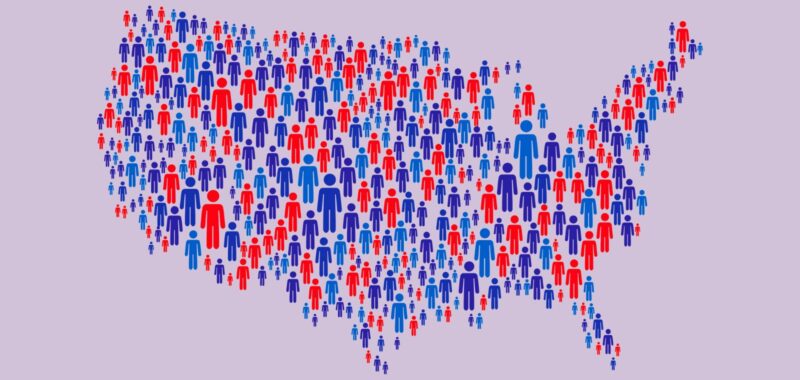With each election cycle, the spotlight on engaging young voters intensifies, underscoring the important role of younger generations in shaping our country’s future. Youth who learn about voting in high school are more likely to become informed and engaged voters in the future. Recognizing this, some states have enacted laws requiring high schools to actively participate in registering young voters. This movement not only seeks to empower students but also instills a sense of responsibility and civic duty from a young age.
Where states are engaging young voters
In Texas, for example, the law mandates that high schools offer voter registration to eligible students twice a year. Colorado, on the other hand, encourages schools to engage in peer-to-peer voter registration, offering the Eliza Pickrell Routt Award to schools that excel in registering voters. This not only fosters a proactive community spirit but also rewards schools for their civic contributions.
Here is the list of states where voter registration activities are required in schools. Is your state on the list?
States that are required to engage young voters:
- Alaska
- Arkansas
- California
- Colorado
- Connecticut
- Georgia
- Hawaii
- Idaho
- Iowa
- Kentucky
- Maine
- Massachusetts
- Michigan
- Minnesota
- Mississippi
- Missouri
- Montana
- New York
- Ohio
- Tennessee
- Texas
- Utah
- Washington
- West Virginia
Challenges in engaging young voters
Despite the efforts made in Texas, for example, compliance in engaging young voters varies widely, with only a quarter of schools meeting the requirement. This gap highlights a missed opportunity to encourage a habit of voting among young citizens. Additionally, college students freshly departed from high school cite still feeling disconnected from the political process. Groups like The Civics Center estimate that while 50% of U.S. teens have access to preregistration at age 16, only 30% of 18-year-olds are registered to vote.
What can teachers and schools do to help?
Teachers and administrators are uniquely positioned to bridge the gap between young individuals and the ballot box. Here are several ways educators can foster a culture of voting.
1. Promote awareness
Many young people are unaware that they can register to vote before they turn 18. Educators can play a crucial role in raising awareness about pre-registration and its benefits.
2. Support your student voters
Empower students to lead voter registration drives by providing resources and guidance. This hands-on approach can make the process more relatable and impactful.
3. Go all-in for civic education
Teach the presidential election process! Embed discussions about democracy and voting rights into the curriculum. This helps students understand the weight of their votes and the mechanics of elections.
4. Bring in community resources
Engage with local organizations like The Civics Center to access training and materials for organizing school-wide voter registration events.
Educators are not just teachers of curriculum but also mentors for future leaders and informed citizens. By fostering an environment that supports and encourages voter participation, you help ensure that young voices are not just heard but are influential in shaping the future of our communities and our nation. By taking proactive steps today, we can cultivate a generation that values and actively participates in our democracy, ensuring a brighter, more engaged future for all.

